 |
| ©Everything Audio Network |
Brevis...
Price: $1,599
Likes: great sound, ARC
Dislikes: room correction PC Only
Wow Factor: "$2,500-sound for $1,600"
More info: Anthem MRX 510
by Russ Long
The Canadian audio company Anthem has faithfully served the audio/video marketplace for 20+ years and they have yet to disappoint. Their components are elegantly designed, with first-class sonics, and they are packed with features. The well-priced, Anthem MRX 510 receiver, reviewed here, receivers exemplifies the company’s dedication to A/V quality.
Features
The MRX series of receivers, which includes the MRX 310, MRX 510 and MRX 710, exemplifies high-quality, robust craftsmanship. The build quality is sublime and the case’s textured finish and the black front panel’s brushed aluminum is offset by the two-line blue dot matrix display. The receivers measure 6-1/2 inches (16.4 cm) high (including feet) by 17-1/4 inches (43.9 cm) wide by14-5/8 inches (37.2 cm) deep. The MRX 310, MRX 510 and MRX 710 are priced at $1,199, $1,599 and $1,999.
The MRX 510 and MRX 710 are 7-channel A/V receivers where the MRX 310 is a 5-channel unit. The MRX 710 provides 120 watts per channel (2 channels driven) or 90 watts per channel (5 channels driven) of continuous power into 8 ohms, the MRX 510, 100 watts (two channels driven) or 75 watts (5 channels driven) and the MRX 310, 80 watts (2 channels driven) or 60 watts (five channels driven)
All three have similar features including HDMI 1.4a (3D compatible) inputs and output, the latest audio formats including Dolby TrueHD, Dolby Digital Plus, DTS-HD Master Audio and High-Resolution Audio, AnthemLogic Cinema/Music, Dolby Pro Logic IIx Movie/Music, DTS Neo:6 Cinema/Music, and Dolby Volume. The DACs are 24-bit/192 kHz, and there is a built-in AM/FM tuner. The receivers include a three-year warranty.
The MRX 510 can be fully controlled via the included backlit remote control (which has a rubberized coating to prevent it from slipping out of your hand). It can also be controlled via an Android app and the iOS app will likely already be available by the time you read this. The receiver weighs 30.2 pounds (13.7 kg) and includes eight HDMI inputs (seven rear, one front) and two HDMI outputs with 4K video upscaling and pass-through for use with the latest ultra-high-definition displays, two component and a composite video input, two coaxial and three optical digital audio inputs, coaxial and optical digital audio outputs, five pairs of analog audio inputs, seven speaker outputs, 7.1-channel preamp outputs and a headphone output. Non-audio/video connections include Ethernet for ARC and app control over network, USB for updates, RS232, 12V trigger, and an IEC power receptacle. The receiver supports dual-zone operation.
The Setup
The bulk of my Anthem MRX 510 testing was done while utilizing the receiver along with a 5.1 set of Episode 700 Series speakers including 2 x ES-700-MON-6, 1 x EX-700-LCR-5, 2 x ES-500-SAT-4, and 1 x ES-SUB-12-300. My typical speaker configuration has the ES-700-MON-6 speakers placed on a pair of 18-inch**speaker stands with the ES-700-LCR-5 at the same height mounted just below a Sony KDL-46EX640 LCD TV. The ES-500-SAT-4’s are mounted slightly higher at 36-inches high. All five tweeters were focused at the listening position. The entire Episode speaker system, with the exception of the ES-SUB-12-300 powered sub, was powered with the Anthem MRX 510. Playback was primarily via a Pioneer Elite BDP-53FD Elite Blu-ray player. I also spent time auditioning the MRX 510 with a pair of Focal Spirit Professional headphones.
The Audition
Before doing any listening or viewing, I calibrated my system with the included Anthem Room Correction (ARC) system. The ARC system includes a high-quality USB electret condenser microphone, a telescopic boom mic stand with clip, USB & CAT5 cables and a CD containing the microphone calibration file and software installer. All that is required is a Windows PC (sorry Mac users) to run the software application.
The mic connects directly to the computer via a USB connection and the computer connects to the MRX 510 via wired LAN (connecting the MRX 510 directly to your home’s router) or Direct Connection (connecting the computer directly to the MRX 510). Since my router is in a totally different place in my house than my theater, I used the Direct Connection option. This option does require setting a static IP address on the computer, but that is not a difficult process.
The ARC system automatically rectifies the effects of room boundaries and reflective surfaces on the audio quality by calculating the response of each speaker, relative to the listening area, and applying corrective equalization. I found the software to be straightforward and easy to use and the results were substantially better than what I’ve attained utilizing room connection systems that I’ve encountered with other receivers. After analyzing each speaker’s in-room response, the software sets output levels, crossover frequencies and correction parameters for each speaker. The system even provides for multiple microphone positions allowing for peaks and nulls to be identified resulting in more precise room alteration.
All of the video images that I referenced through the MRX 510 were via HDMI and the quality was always exceptional. While I’m still uncertain if 3D is going to become a standard and I currently don’t have a way to test it, it’s nice that the unit is 3D-ready. I don’t listen to a lot of radio these days but I do still like to have the option and the MRX 510’s old-school analog AM/FM tuner works well. Missing is a phono stage so anyone who wants to have the option of listening to their vinyl collection (that’s a must in my world!) will need to by a stand-alone phono preamp. I love the flip-down panel that hides the front panel’s HDMI and headphone input, when not in use, keeping the unit looking clean and sleek.
I began my testing by watching the Frozen Blu-ray, as I believe that I was one of only a dozen or so people in the country who still hadn’t watched the film. The BD version sounds and looks beautiful and was a perfect way to showcase the fidelity of the MRX 510. The dialog retained its clarity throughout and the music was rich, lush and powerful. I followed Frozen with my staple Blu-ray reference discs including: Hugo, Ratatouille and The Dark Knight and they all translated wonderfully through the Anthem receiver.
Thankfully, Criterion’s new Dual Format Blu-ray/DVD release of A Hard Day’s Night shipped before the end of my review period, so I was able to include it in my listening tests. The film supports a new 1.75:1 aspect ratio black and white 1080p/AVC MPEG-4 transfer that has been fully approved by Richard Lester, the film’s original director. The new 4K scan was sourced from the original 35mm camera negative and two fine-grain master positives. The film includes the original mono track, as well as newly mixed stereo and 5.1 tracks.
The HDN 5.1 track is wonderful allowing the music tracks to envelop the listener in full surround sound while remaining respectful to the original mono track. While many receivers I’ve tested have a quality sound at lower volumes, few shine like the Anthem when listening at substantial levels. I was reminded of this, again, when I cranked the Anthem during A Hard Day’s Night music tracks – beautiful!
I concluded my critical listening with the James Taylor - Hourglass, Pink Floyd - Dark Side of the Moon, and Elton John - Goodbye Yellow Brick Road surround SACDs, plus two surround DVD-As: Beach Boys - Pet Sounds and the Beatles - Love, and I was continually impressed with the sound quality and sonic detail regardless of my monitoring level. Throughout my testing I found that the MRX 510 retained its definition, clarity and punch regardless of volume, and I don’t believe my Episode speakers have ever sounded this good.
The verdict
While easily fitting into the mid-priced receiver category, Anthem’s MRX 510 delivers the goods better than units costing at least a thousand dollars more. The included-ARC package provides an easy yet effective way to configure a listening space, and the unit can easily power typical surround speaker setups — without any audible signs of strain. The resulting sound is smooth and natural with a clean defined bottom end and pristine, high-frequency shimmer. Sonically, and feature wise, Anthem’s MRX 510 is a lot of receiver for the money. Definitely worthy of the Everything Audio Network Stellar Sound Award.
An avid home theater and audiophile listener, Russ Long makes his living as a Nashville-based professional audio engineer, who has recorded hundreds of albums for various artists, including Grammy Award winner Sixpence None The Richer. Articles on this site are the copyright of the ©Everything Audio Network. Any unauthorized use, via print or Internet, without written permission is prohibited.
The Canadian audio company Anthem has faithfully served the audio/video marketplace for 20+ years and they have yet to disappoint. Their components are elegantly designed, with first-class sonics, and they are packed with features. The well-priced, Anthem MRX 510 receiver, reviewed here, receivers exemplifies the company’s dedication to A/V quality.
Features
The MRX series of receivers, which includes the MRX 310, MRX 510 and MRX 710, exemplifies high-quality, robust craftsmanship. The build quality is sublime and the case’s textured finish and the black front panel’s brushed aluminum is offset by the two-line blue dot matrix display. The receivers measure 6-1/2 inches (16.4 cm) high (including feet) by 17-1/4 inches (43.9 cm) wide by14-5/8 inches (37.2 cm) deep. The MRX 310, MRX 510 and MRX 710 are priced at $1,199, $1,599 and $1,999.
The MRX 510 and MRX 710 are 7-channel A/V receivers where the MRX 310 is a 5-channel unit. The MRX 710 provides 120 watts per channel (2 channels driven) or 90 watts per channel (5 channels driven) of continuous power into 8 ohms, the MRX 510, 100 watts (two channels driven) or 75 watts (5 channels driven) and the MRX 310, 80 watts (2 channels driven) or 60 watts (five channels driven)
All three have similar features including HDMI 1.4a (3D compatible) inputs and output, the latest audio formats including Dolby TrueHD, Dolby Digital Plus, DTS-HD Master Audio and High-Resolution Audio, AnthemLogic Cinema/Music, Dolby Pro Logic IIx Movie/Music, DTS Neo:6 Cinema/Music, and Dolby Volume. The DACs are 24-bit/192 kHz, and there is a built-in AM/FM tuner. The receivers include a three-year warranty.
The included-ARC package provides an easy yet effective way to configure a listening space, and the unit can easily power typical surround speaker setups — without any audible signs of strain. The resulting sound is smooth and natural with a clean defined bottom end and pristine, high-frequency shimmer.
The MRX 510 can be fully controlled via the included backlit remote control (which has a rubberized coating to prevent it from slipping out of your hand). It can also be controlled via an Android app and the iOS app will likely already be available by the time you read this. The receiver weighs 30.2 pounds (13.7 kg) and includes eight HDMI inputs (seven rear, one front) and two HDMI outputs with 4K video upscaling and pass-through for use with the latest ultra-high-definition displays, two component and a composite video input, two coaxial and three optical digital audio inputs, coaxial and optical digital audio outputs, five pairs of analog audio inputs, seven speaker outputs, 7.1-channel preamp outputs and a headphone output. Non-audio/video connections include Ethernet for ARC and app control over network, USB for updates, RS232, 12V trigger, and an IEC power receptacle. The receiver supports dual-zone operation.
The Setup
The bulk of my Anthem MRX 510 testing was done while utilizing the receiver along with a 5.1 set of Episode 700 Series speakers including 2 x ES-700-MON-6, 1 x EX-700-LCR-5, 2 x ES-500-SAT-4, and 1 x ES-SUB-12-300. My typical speaker configuration has the ES-700-MON-6 speakers placed on a pair of 18-inch**speaker stands with the ES-700-LCR-5 at the same height mounted just below a Sony KDL-46EX640 LCD TV. The ES-500-SAT-4’s are mounted slightly higher at 36-inches high. All five tweeters were focused at the listening position. The entire Episode speaker system, with the exception of the ES-SUB-12-300 powered sub, was powered with the Anthem MRX 510. Playback was primarily via a Pioneer Elite BDP-53FD Elite Blu-ray player. I also spent time auditioning the MRX 510 with a pair of Focal Spirit Professional headphones.
The Audition
Before doing any listening or viewing, I calibrated my system with the included Anthem Room Correction (ARC) system. The ARC system includes a high-quality USB electret condenser microphone, a telescopic boom mic stand with clip, USB & CAT5 cables and a CD containing the microphone calibration file and software installer. All that is required is a Windows PC (sorry Mac users) to run the software application.
The mic connects directly to the computer via a USB connection and the computer connects to the MRX 510 via wired LAN (connecting the MRX 510 directly to your home’s router) or Direct Connection (connecting the computer directly to the MRX 510). Since my router is in a totally different place in my house than my theater, I used the Direct Connection option. This option does require setting a static IP address on the computer, but that is not a difficult process.
 |
| Plenty of connection options on MRX-510 |
The ARC system automatically rectifies the effects of room boundaries and reflective surfaces on the audio quality by calculating the response of each speaker, relative to the listening area, and applying corrective equalization. I found the software to be straightforward and easy to use and the results were substantially better than what I’ve attained utilizing room connection systems that I’ve encountered with other receivers. After analyzing each speaker’s in-room response, the software sets output levels, crossover frequencies and correction parameters for each speaker. The system even provides for multiple microphone positions allowing for peaks and nulls to be identified resulting in more precise room alteration.
All of the video images that I referenced through the MRX 510 were via HDMI and the quality was always exceptional. While I’m still uncertain if 3D is going to become a standard and I currently don’t have a way to test it, it’s nice that the unit is 3D-ready. I don’t listen to a lot of radio these days but I do still like to have the option and the MRX 510’s old-school analog AM/FM tuner works well. Missing is a phono stage so anyone who wants to have the option of listening to their vinyl collection (that’s a must in my world!) will need to by a stand-alone phono preamp. I love the flip-down panel that hides the front panel’s HDMI and headphone input, when not in use, keeping the unit looking clean and sleek.
I began my testing by watching the Frozen Blu-ray, as I believe that I was one of only a dozen or so people in the country who still hadn’t watched the film. The BD version sounds and looks beautiful and was a perfect way to showcase the fidelity of the MRX 510. The dialog retained its clarity throughout and the music was rich, lush and powerful. I followed Frozen with my staple Blu-ray reference discs including: Hugo, Ratatouille and The Dark Knight and they all translated wonderfully through the Anthem receiver.
While many receivers I’ve tested have a quality sound at lower volumes, few shine like the Anthem when listening at substantial levels. I was reminded of this, again, when I cranked the Anthem during "A Hard Day’s Night" music tracks – beautiful!
Thankfully, Criterion’s new Dual Format Blu-ray/DVD release of A Hard Day’s Night shipped before the end of my review period, so I was able to include it in my listening tests. The film supports a new 1.75:1 aspect ratio black and white 1080p/AVC MPEG-4 transfer that has been fully approved by Richard Lester, the film’s original director. The new 4K scan was sourced from the original 35mm camera negative and two fine-grain master positives. The film includes the original mono track, as well as newly mixed stereo and 5.1 tracks.
The HDN 5.1 track is wonderful allowing the music tracks to envelop the listener in full surround sound while remaining respectful to the original mono track. While many receivers I’ve tested have a quality sound at lower volumes, few shine like the Anthem when listening at substantial levels. I was reminded of this, again, when I cranked the Anthem during A Hard Day’s Night music tracks – beautiful!
I concluded my critical listening with the James Taylor - Hourglass, Pink Floyd - Dark Side of the Moon, and Elton John - Goodbye Yellow Brick Road surround SACDs, plus two surround DVD-As: Beach Boys - Pet Sounds and the Beatles - Love, and I was continually impressed with the sound quality and sonic detail regardless of my monitoring level. Throughout my testing I found that the MRX 510 retained its definition, clarity and punch regardless of volume, and I don’t believe my Episode speakers have ever sounded this good.
The verdict
While easily fitting into the mid-priced receiver category, Anthem’s MRX 510 delivers the goods better than units costing at least a thousand dollars more. The included-ARC package provides an easy yet effective way to configure a listening space, and the unit can easily power typical surround speaker setups — without any audible signs of strain. The resulting sound is smooth and natural with a clean defined bottom end and pristine, high-frequency shimmer. Sonically, and feature wise, Anthem’s MRX 510 is a lot of receiver for the money. Definitely worthy of the Everything Audio Network Stellar Sound Award.
An avid home theater and audiophile listener, Russ Long makes his living as a Nashville-based professional audio engineer, who has recorded hundreds of albums for various artists, including Grammy Award winner Sixpence None The Richer. Articles on this site are the copyright of the ©Everything Audio Network. Any unauthorized use, via print or Internet, without written permission is prohibited.




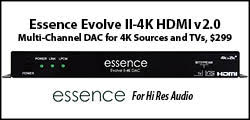

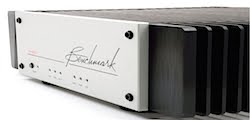



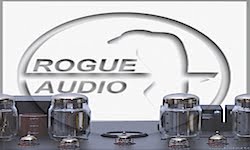




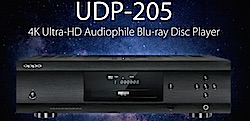


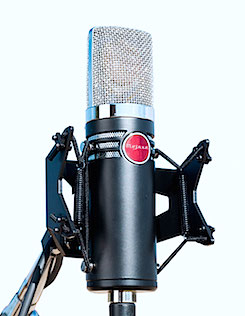

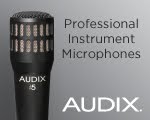









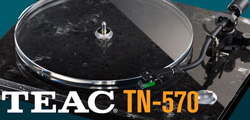





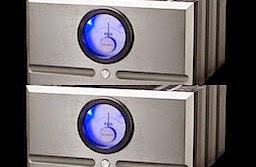






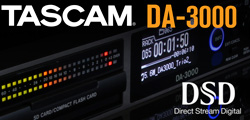

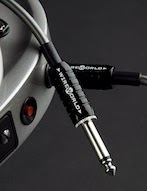

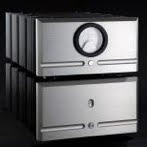









No comments:
Post a Comment